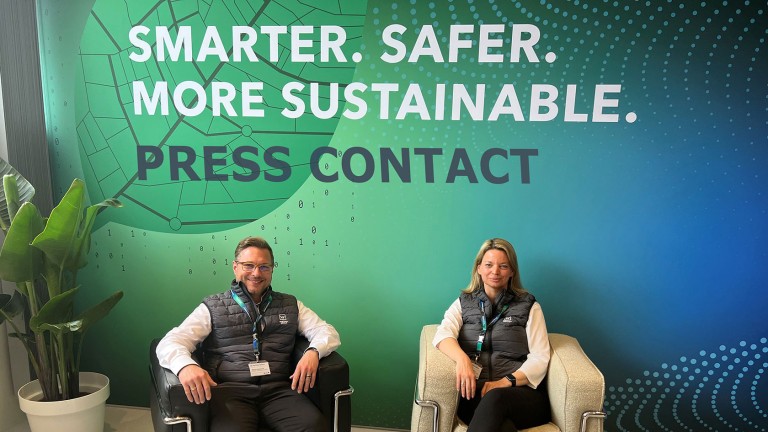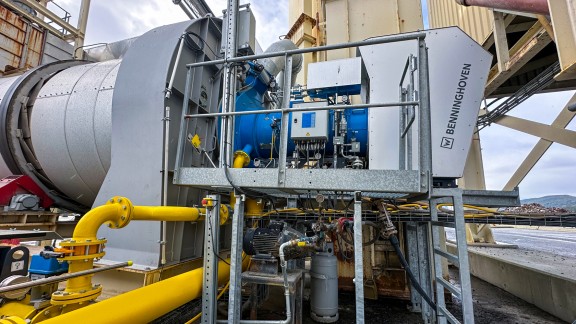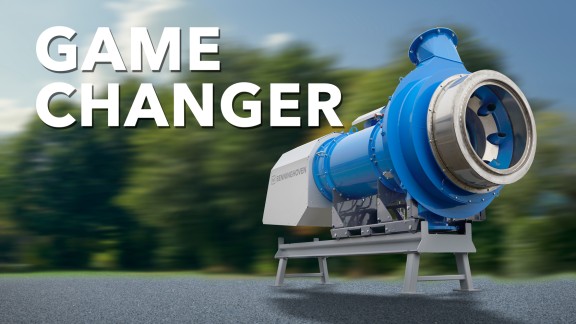MULTI JET burner switches fuels
New Benninghoven burner generation now available as standard product
Regardless of their physical state – whether solid, liquid, or gaseous – the new burner generation from Benninghoven uses up to four different fuels. Most important of all is the ability to use hydrogen as a sustainable future energy source.
On-the-fly fuel changes for mixed firing without downtime
A special feature of the MULTI JET burners is mixed firing, which permits the simultaneous use of hydrogen, LPG, HVO, biogas, and natural gas. Thanks to separately placed nozzles, optimum combustion is assured for each type of fuel. Fuels can be switched on the fly, without the need for shutdowns or downtime. This system offers a reliable supply with different fuels, and therefore gives plant owners a high level of flexibility when selecting the most cost-effective and most readily available energy source.
Benefits for noise emissions, performance, and price
Alongside reducing carbon emissions, Steven Mac Nelly, Head of Development & Design Engineering at Benninghoven, lists other benefits offered by the new burner generation: “Noise emissions have been reduced by 5 dB(A) with the new burner generation – equivalent to cutting perceived noise levels in half. Electrical power consumption has also been reduced by 20% while keeping feed capacity the same.” Hydrogen will also offer a significant price advantage over fossil fuels in the future, as no carbon taxes will be levied on fuels that produce no carbon emissions. Mac Nelly: “In Scandinavia and countries like Switzerland, the effects of tougher carbon pricing on fossil fuels can already be felt.
Hydrogen usable as a flexible fuel from various sources
Benninghoven has developed a coordinated, all-in-one solution for material drying. For the first time, this now lets users deploy up to 100% green hydrogen as part of normal production. The hydrogen drying system consists of a multi-fuel burner, a burner control, a feed system with a patented pressure control section that throttles back the hydrogen for the burner from 350 bar to the required 1.3 barA, and other plant components specifically adapted to operation with hydrogen. This end-to-end solution connects directly to the hydrogen source, flexibly incorporating different sources like trailers, pipelines, or remote electrolyzers.
A safety plan is required when using hydrogen. This was created by Benninghoven experts working with the company. Alongside reducing carbon emissions, NOx emissions must also be monitored. The Benninghoven system includes exhaust gas recirculation, which keeps NOx emissions low.
Standard product also available as a Retrofit solution for plants from other manufacturers
The new burner generation is not only suitable for new Benninghoven systems but can also be used as a retrofit option for existing plants. The burner can also be integrated into existing plants regardless of the plant manufacturer, where it ensures virtually emission-free asphalt production. Thanks to the flexible usage options – depending on the availability of the fuels, location, or use case – production processes can be optimized for sustainability today: the MULTI JET burner is already available to plant operators as a standard catalog product.

Public Relations
Reinhard-Wirtgen-Straße 2
53578 Windhagen
Germany

